Silk’s Elegance
Silk’s Timeless Appeal (丝绸的永恒吸引力)
Silk, with its shimmering allure, has been a cornerstone of traditional Chinese clothing for over 5,000 years. Its enduring popularity is attributed to its unique characteristics and timeless appeal.
Material Quality and Craftsmanship (材质质量和工艺)
Silk is renowned for its exceptional quality, characterized by its smooth texture, natural sheen, and softness against the skin. Its fine threads, typically measuring 1.25 deniers, contribute to its luxurious feel.
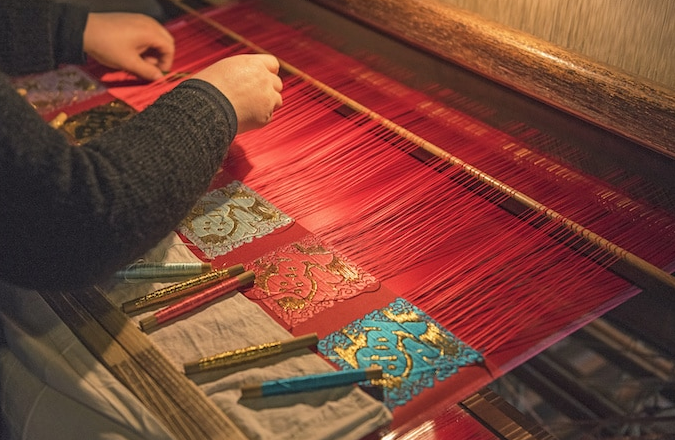
Versatility in Garment Types (服装种类的多样性)
Silk’s versatility shines through in its use across various traditional Chinese garments, including elegant qipaos, flowing hanfu, and intricate dragon robes. Its adaptability to different styles and occasions is a testament to its enduring relevance.
Cost and Production (成本和生产)
The cost of silk garments can vary significantly depending on factors like design complexity and embroidery. Traditional craftsmanship plays a crucial role in the production process, impacting both cost and quality.
Longevity and Care (寿命和保养)
Well-maintained silk garments can last for generations, showcasing the material’s durability. Proper care, such as gentle handwashing and storage in a cool, dry place, can extend their lifespan.
Symbolism and Cultural Significance (象征和文化意义)
Silk carries deep cultural significance in Chinese history. It symbolizes wealth, nobility, and refinement. Emperors and empresses wore silk exclusively, highlighting its association with royalty.
Advantages and Limitations (优点和局限性)
- Advantages: Silk’s advantages encompass its breathability, moisture-wicking properties, and elegant drape, making it ideal for both warm and cool weather.
- Limitations: The primary drawback of silk lies in its cost; it can be expensive due to the labor-intensive process of silkworm rearing and silk extraction.
Modern Applications (现代应用)
Silk has found its place in modern fashion, luxury textiles, and even high-tech applications, such as silk-based medical sutures and biodegradable electronics, highlighting its continued relevance and adaptability.
Learn more about Silk on Wikipedia
Cotton’s Practicality
Cotton’s Versatile Applications (棉布的多用途)
Cotton, known for its versatility, has been a staple material in traditional Chinese clothing, offering practicality across various aspects of life.
Material Quality and Comfort (材质质量和舒适性)
Cotton fabric is valued for its softness and breathability, providing exceptional comfort. With thread counts ranging from 100 to 800, it caters to diverse preferences for thickness and texture.
Everyday Attire and Durability (日常服饰和耐用性)
Cotton’s affordability and durability make it a popular choice for everyday wear. Cotton garments, such as loose-fitting tunics and trousers, withstand frequent washing and wear.
Cost and Accessibility (成本和可获得性)
Cotton’s accessibility contributes to its practicality. It is a cost-effective material, with prices per meter ranging from $1 to $20, depending on quality and design.
Climate Adaptability (气候适应性)
Cotton’s ability to absorb moisture and regulate temperature makes it ideal for various climates. It offers comfort in both hot and cold weather, thanks to its moisture-wicking properties.
Advantages and Limitations (优点和局限性)
- Advantages: Cotton’s advantages include breathability, comfort, and ease of care. It is also hypoallergenic and suitable for individuals with sensitive skin.
- Limitations: Cotton’s downside lies in its potential to shrink if not properly cared for. It may also wrinkle easily.
Modern Innovations (现代创新)
Cotton continues to evolve with modern innovations, such as organic cotton production, which emphasizes sustainability and environmental consciousness.
Social and Economic Impact (社会和经济影响)
Cotton production has historically played a significant role in China’s economy. It employs millions of people and contributes to rural development.
Learn more about Cotton on Wikipedia
Brocade’s Luxury
Brocade Weaving Artistry (锦缎织造艺术)
Brocade, a fabric known for its opulence, has been an integral part of traditional Chinese clothing, showcasing exquisite craftsmanship and intricate patterns.
Material Composition and Quality (材质组成与质量)
Brocade is typically woven with silk threads, enhancing its sheen and luxurious texture. The use of gold and silver threads adds to its richness. It commonly features a thread count of 90-150 threads per inch.
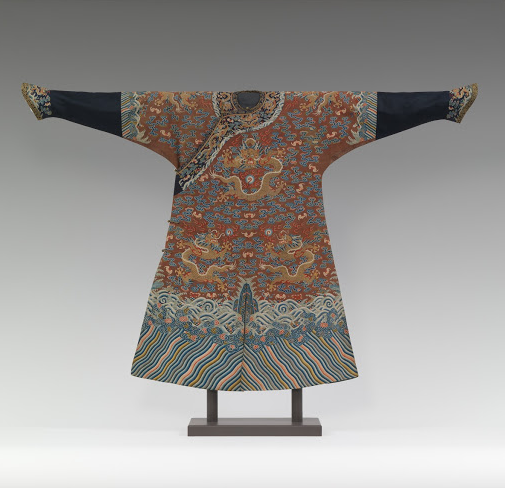
Intricate Patterns and Designs (精致的图案和设计)
Brocade’s hallmark is its elaborate patterns, often inspired by nature, mythology, or historical motifs. Designs are meticulously woven with great attention to detail.
Cost and Production Complexity (成本和制作复杂性)
The production of brocade is labor-intensive and time-consuming, contributing to its higher cost. A square meter of brocade can range from $10 to $50 or more, depending on complexity.
Usage in Royal and Ceremonial Attire (在皇室和仪式服饰中的应用)
Brocade is synonymous with royal and ceremonial attire in China. Emperors, empresses, and high-ranking officials wore brocade garments during significant events and ceremonies.
Advantages and Limitations (优点和局限性)
- Advantages: Brocade’s advantages include its regal appearance, durability, and the ability to hold its shape well in structured garments.
- Limitations: Its limitations include a higher cost, making it less accessible to the general population. It can also be heavy and less comfortable for everyday wear.
Contemporary Revival (当代复兴)
Brocade has experienced a revival in modern fashion, where designers incorporate brocade elements into couture and eveningwear, preserving its cultural significance.
Cultural Heritage and Preservation (文化遗产和保护)
Efforts to preserve the art of brocade weaving and pass it down to future generations are crucial in maintaining this luxurious textile’s legacy.
Learn more about Brocade on Wikipedia
Linen, Wool, and Bamboo
Versatility of Linen (亚麻的多功能性)
Linen’s Natural Cooling Properties (亚麻的自然冷却特性)
Linen, made from flax fibers, offers exceptional cooling properties, making it a preferred choice for summer clothing. With a thread count of 80-150 threads per inch, linen fabric enhances breathability.
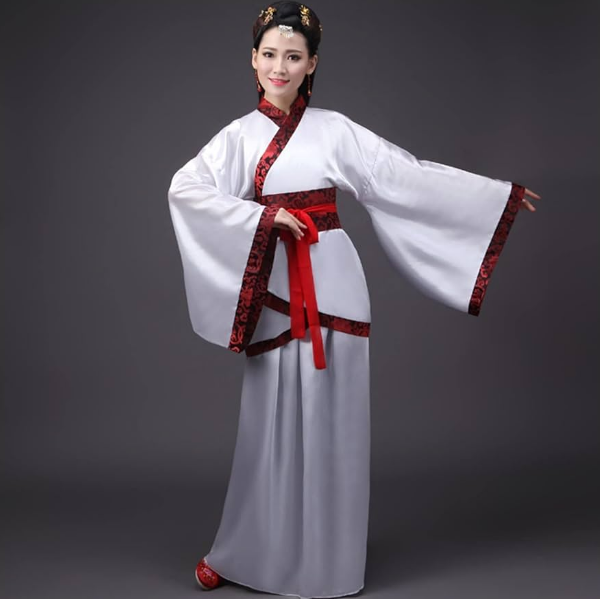
Durability and Longevity (耐用性和寿命)
Linen boasts impressive durability, with garments often lasting 20-30 years or more when cared for properly. This longevity adds value to linen clothing.
Eco-Friendly and Sustainable (环保与可持续性)
As a natural fiber, linen is biodegradable and requires less water and pesticides during cultivation, making it an environmentally friendly choice.
Warmth and Insulation of Wool (羊毛的保暖和绝缘)
Wool’s Thermal Properties (羊毛的保温特性)
Wool, renowned for its warmth, can retain heat even when wet, making it ideal for cold climates. It boasts an impressive R-value of 3.7 per inch.
Cost and Accessibility (成本和可获得性)
The cost of wool garments can vary widely, with prices per meter ranging from $10 to $100 or more, depending on the type of wool and garment complexity.
Sustainable Practices (可持续实践)
Sustainable wool production, which includes responsible animal husbandry and ethical shearing practices, ensures the long-term viability of wool as a material.
Benefits of Bamboo Fabric (竹纤维织物的优点)
Bamboo’s Eco-Friendly Growth (竹子的环保生长)
Bamboo grows rapidly, requiring minimal water and no pesticides, contributing to its eco-friendly reputation.
Moisture-Wicking and Breathability (吸湿排汗和透气性)
Bamboo fabric is highly moisture-wicking, making it suitable for activewear. It offers breathability with a moisture absorption rate of 4 times that of cotton.
Cost and Production (成本和生产)
Bamboo fabric production costs are competitive, with prices per meter ranging from $5 to $15, depending on quality and garment design.
Limitations and Trade-Offs (局限性和权衡)
- Linen: Prone to wrinkles, linen garments may require more maintenance. However, some appreciate the casual, lived-in look.
- Wool: Its warmth may be a disadvantage in hot climates. Wool can be prone to shrinking if not properly cared for.
- Bamboo: While bamboo fabric is eco-friendly, its production process can involve chemicals, requiring careful management for sustainability.
These materials offer unique advantages, with applications that cater to diverse needs and climates.
Learn more about Linen on Wikipedia Learn more about Wool on Wikipedia Learn more about Bamboo textile on Wikipedia
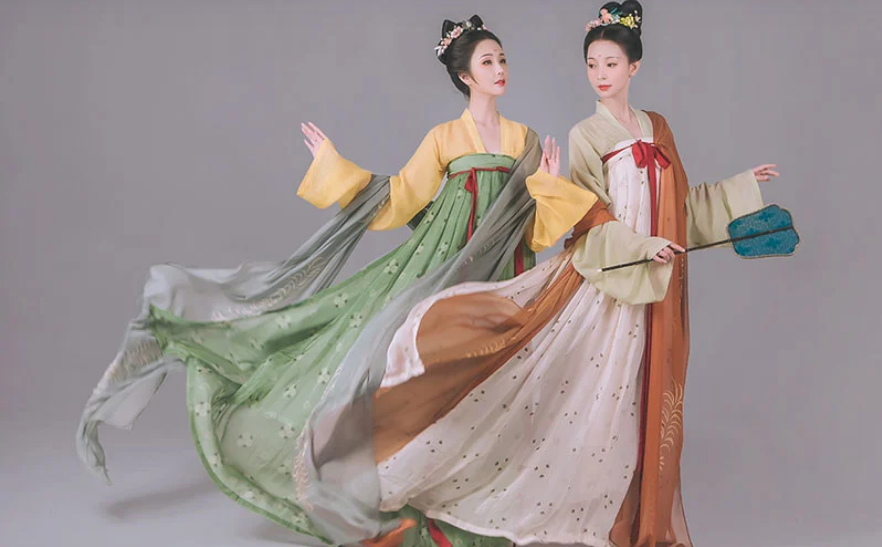
Material Shifts Over Dynasties
Imperial Preference for Silk (丝绸的皇室偏好)
Silk in Ancient Dynasties (古代朝代中的丝绸)
- In ancient China, silk was exclusively worn by the ruling class and royalty, signifying their power and wealth.
- The Han Dynasty (206 BC – 220 AD) saw the widespread use of silk as both clothing and currency.
- Silk production reached its peak during the Tang Dynasty (618 – 907 AD), with over 2 million people involved in sericulture.
Cotton’s Rise in the Yuan Dynasty (元朝中棉花的崛起)
- The Mongol-led Yuan Dynasty (1271 – 1368 AD) promoted cotton clothing due to its affordability and comfort.
- Cotton gradually gained popularity among the common people, marking a shift in material preference.
Ming Dynasty’s Brocade Extravaganza (明朝的锦缎盛宴)
- The Ming Dynasty (1368 – 1644 AD) embraced the luxurious brocade, using it extensively in imperial attire.
- Brocade’s intricate patterns and designs became synonymous with Ming fashion.
Qing Dynasty’s Silk and Manchu Influence (清朝的丝绸和满洲影响)
- The Qing Dynasty (1644 – 1912 AD) maintained silk as a symbol of prestige while incorporating Manchu-style clothing, characterized by wool and fur, into their attire.
- This blend of materials reflected the dynasty’s multicultural influences.
Modern Times: Synthesis of Tradition and Modernity (现代:传统与现代的融合)
- In the 20th century, Western-style clothing and synthetic fabrics gained popularity, representing a departure from traditional Chinese materials.
- Today, Chinese fashion integrates a mix of materials, reflecting both heritage and contemporary influences.
Factors Influencing Material Shifts (影响材料变迁的因素)
- Royal decree and fashion trends played a significant role in material shifts.
- Economic factors, such as production cost and availability, influenced material choices.
- Cultural exchange and globalization introduced new materials to Chinese clothing.
Balancing Tradition and Modernity (平衡传统与现代)
- China’s clothing industry continues to evolve, with designers exploring innovative blends of traditional and modern materials, meeting the needs of a changing society.
Learn more about Chinese Dynasties on Wikipedia
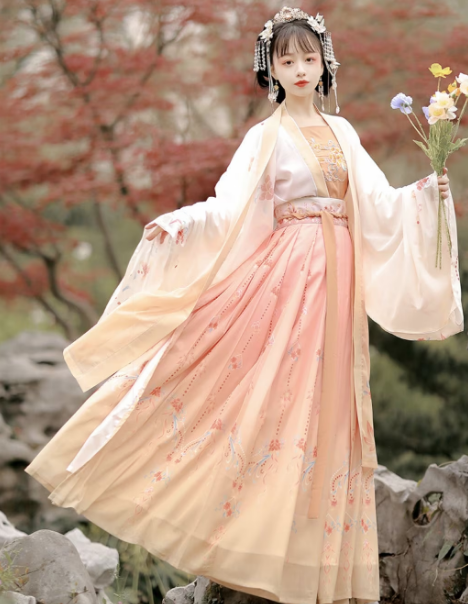
Cultural Significance
Silk: A Symbol of Wealth and Nobility (丝绸:财富和贵族的象征)
Silk’s Royal Prestige (丝绸的皇家威望)
- Silk was exclusively reserved for emperors and high-ranking officials, symbolizing their status.
- This cultural significance persisted throughout Chinese history, reinforcing silk’s association with power and wealth.
Silk in Ceremonial Rituals (丝绸在仪式中的应用)
- Silk played a central role in traditional Chinese ceremonies, from weddings to ancestral worship.
- Its use in rituals emphasized the cultural and spiritual importance of the material.
Brocade: Artistic Expression and Symbolism (锦缎:艺术表达和象征意义)
Brocade’s Mythological Motifs (锦缎的神话图案)
- Elaborate brocade patterns often drew inspiration from Chinese mythology and folklore.
- These designs conveyed cultural stories and beliefs, adding depth to the clothing’s significance.
Brocade as a Reflection of Social Status (锦缎作为社会地位的反映)
- The use of brocade was not only for aesthetic purposes but also to signify social standing.
- It served as a visual language, conveying an individual’s rank and achievements.
Linen, Wool, and Bamboo: Regional Identity (亚麻、羊毛与竹:地区特色)
Linen’s Coolness in Southern China (亚麻在中国南部的凉爽性)
- Linen’s use in the southern regions with hot climates reflects its cultural adaptability.
- It embodies the practicality of using materials suited to local conditions.
Wool’s Cold Weather Resilience (羊毛的寒冷天气适应力)
- Wool’s popularity in northern regions was a response to colder climates, showcasing the importance of environmental adaptation in Chinese culture.
- It also symbolized resilience against harsh winters.
Bamboo’s Eco-Friendly Appeal (竹的环保吸引力)
- Bamboo’s eco-friendly qualities align with Chinese cultural values of harmony with nature.
- Its use reflects an appreciation for sustainability and responsible resource management.
Modern Cultural Synthesis (现代文化综合)
- Today, Chinese clothing combines traditional materials with modern textiles, representing a fusion of cultural heritage and contemporary lifestyles.
- This blending of old and new materials symbolizes China’s evolving cultural identity.
Learn more about Chinese Culture on Wikipedia







